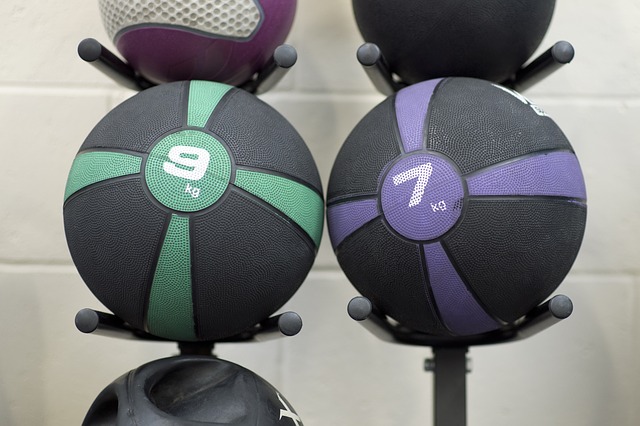- You are here:
- Home »
- Blog »
- Training »
- Medicine Ball Twists: 5 Techniques and Variations
Medicine Ball Twists: 5 Techniques and Variations

Photo By: Pixabay
When most people want to work their core, their mind immediately goes towards a variety of ab exercises like crunches and sit-ups. These movements only target the abs and neglect the obliques and lower back, which are crucial to a strong and functional core.
Restricting yourself to just a few core exercises will severely limit your progress and preventing all of the muscles that are important to having a strong midsection. Twisting exercises are a great alternative to traditional crunches and sit-ups and allow you to work more core muscles. Below are 5 types of medicine ball twists that will work the abdominals, obliques, and lower back.
Seated Russian Twist
It may have many different names, but the Russian twist is one of the more popular core twisting exercises. To do this, you sit on the floor with your knees up and heels lightly touching the ground. You will be leaning slightly back with your upper body. Then, you rotate in each direction through a full range of motion.
You can see a demonstration of proper technique in the video below. For a more advanced exercise, you can do these with your feet off the ground. This will really challenge your balance and force your core to work to stabilize your body.
Standing Twist
Standing medicine ball twists are perhaps your simplest option for performing a twist exercise and a great choice for beginners. As you could guess from the name, these are as easy as twisting side to side with the med ball while standing. This might not seem like the most challenging variation, but if you have a heavy enough ball and use a full range of motion, it can still be challenging.
To perform this movement, you stand with your feet shoulder width apart with a slight bend in your knees. Using good posture and a stable core, hold the ball directly in front of you with your arms fully extended. Then you rotate in each direction as far as possible. Keep the ball level throughout the movement.
Walking Forward Lunge with Twist
Incorporating twists with other lifts helps to increase the level of difficulty. The video below shows proper form for a walking forward lunge with a med ball twist. Doing twists from a lunged position allows your obliques and lower back to be targeted from a different angle than just seated or standing.
To do these, you begin by lunging forward. When you are the in the bottom position of the lunge, you twist your upper body to the side of your lead leg. So, if you lunge forward with your right leg, you twist to your right leg. Then, return the med ball to the starting position and lunge and twist with the left side.
Sit-up with Twist
Combining sit-ups with a twists will put extra emphasis on your abdominal muscles without having to do boring crunches or sit-ups. As the name implies, you essentially perform a sit-up followed by a Russian twist before returning to the starting position.
You can see what this looks like in the video below. This is one of the more complete exercise you can do for your core, as it works muscles in your abdominals, lower back, and obliques. This makes it a great choice to get core work in even when you are short on time.
Standing Partner Twist
Partner medicine ball exercises are a great idea when working with a small group. This movement is very similar to the standing twist mentioned above, but it is obviously done with 2 people instead of 1. This forces each athlete to use a full range of motion, because the have to be able to get the med ball to their partner.
This exercise begins with the partners standing back-to-back with one of them holding the medicine ball. Then, they both twist to the same side and pass the ball. They then twist to the other side and continue to pass the ball. Once the timing and rhythm of this gets down, they should be able to go quite fast.
Recap
Medicine ball twists are a great choice for working all of the major core muscle groups. Med balls allow you to work the muscles in different ways. There are enough variations of these exercises that you should never have to get bored with core training.

